The world is in a joint effort to achieve a net-zero economy by 2050. The ongoing energy transition has motivated the emergence of new technologies, which promises to cause even more transformation in the renewables market.
We already know the benefits and popularity of photovoltaic panels. Its rise is also primarily due to changing consumer behavior, with new generations showing a greater commitment to clean energy.
Given this scenario, a new technology has been attracting attention recently and increasing expectations surrounding the potential of solar energy. We are talking about the buzz on concentrated solar power technology and its solution for generating electricity. But how does this work, and who are some of the players bringing the market’s attention?
What is Concentrated Solar Power?
Concentrated Solar Power (CSP) is the technology developed to generate electricity by converting concentrated sunlight into solar thermal energy. Mirrors reflect solar radiation to a thermal receiver. This collected solar energy is then absorbed and used to heat the so-called heat-transfer fluid (HFT).
The heat retained in the fluid is stored and then powers a turbine to generate electrical energy. As we are talking about a thermal energy storage (TES), this energy can be used later, during periods of low sunlight, and even at night.
Thermal energy also can be used in several industrial applications such as food processing and water desalination.
What are the types of concentrated solar power?
There are basically four main ways of concentrating solar power energy.
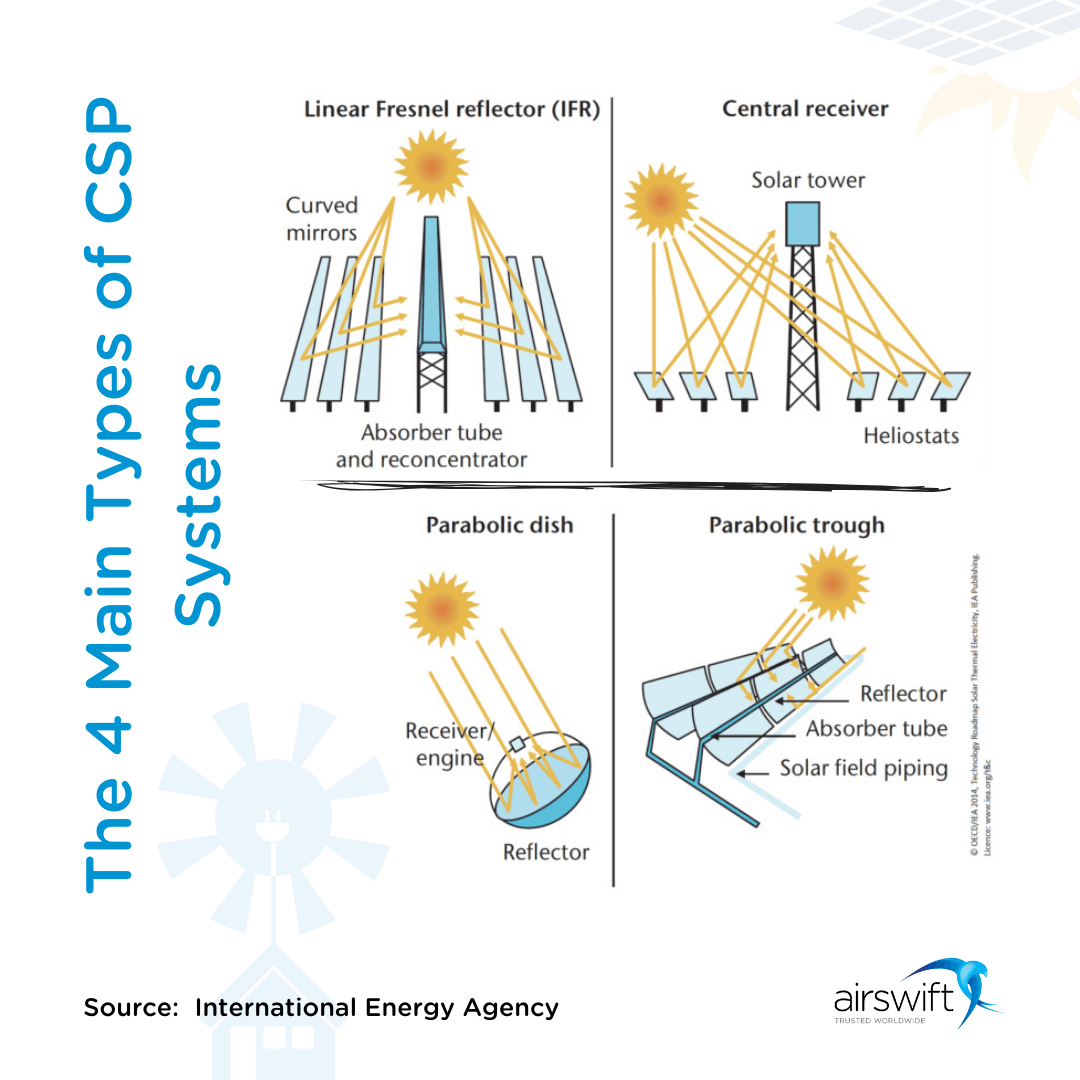
How efficient is concentrated solar power?
Many factors impact the concentrated solar power efficiency; the type of system used is one of them. We already know that solar tower systems are the most efficient in generating electricity due to the high temperatures (302 °F ~ 3632 °F) reached by the sunlight concentration.
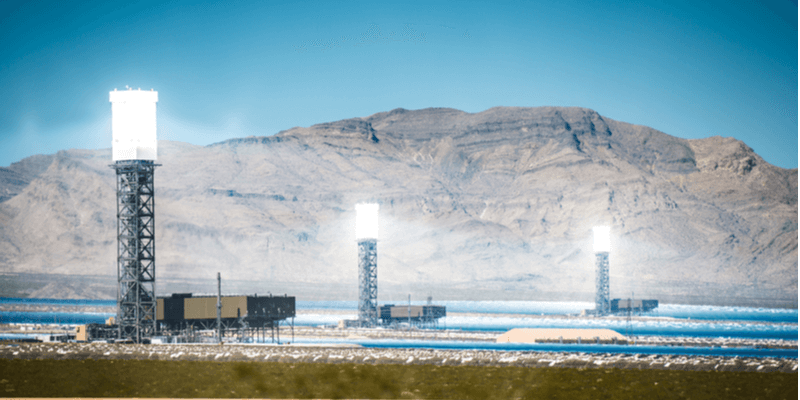
Source: Frame Stock Footage/Shutterstock
CSP has an efficiency of around 7% and 25%, which is very close to the results of solar photovoltaics.
What is the difference between CSP and Concentrator Photovoltaics (CPV)?
The two systems may appear to be the same but each uses different technologies. Concentrator photovoltaics converts the sunlight into electricity through PV cells made of semiconductor materials.
While the photovoltaic effect comes into play in one, the other system (CSP) uses different principles, such as the heat-transfer fluid.
What are the disadvantages of concentrated solar power?
When we talk about the disadvantages involving CSP, it is common to list the high complexity of installation and its high cost. And it’s true, but whenever we bring up these items, it’s within the context of comparison with photovoltaic systems.
And therein lies the error. Because, as it is a thermal energy, the correct thing would be to compare it with other thermal energy sources, such as natural gas.
What are the advantages of concentrated solar power?
We are talking about an energy whose source is the sunlight, that is, a free and abundant resource. And just like natural gas, CSP is also dispatchable.
Despite being a clean and renewable source, Concentrated solar power still lags behind natural gas when it comes to price.
But here we have a problem, as affordable as natural gas is, we are talking about an energy source that ends up leaking methane – this greenhouse gas is way more potent than carbon dioxide.
Therefore, CSP is far from being seen as a disposable or low-potential energy source. Its potential gains even more supporters when we see that this system can complement photovoltaic systems and thus help leverage the solar and wind industry.
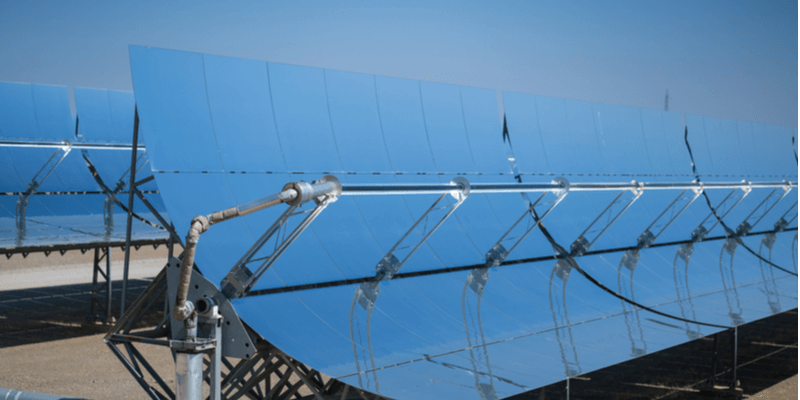
Is Concentrated Solar Power becoming cheaper?
This is an excellent prospect that solar energy technology has shown over the years. Just as the cost of photovoltaic panels has dropped, the cost of installing CSP has also decreased – from 2019 to 2020, there has been an 18% reduction in price.
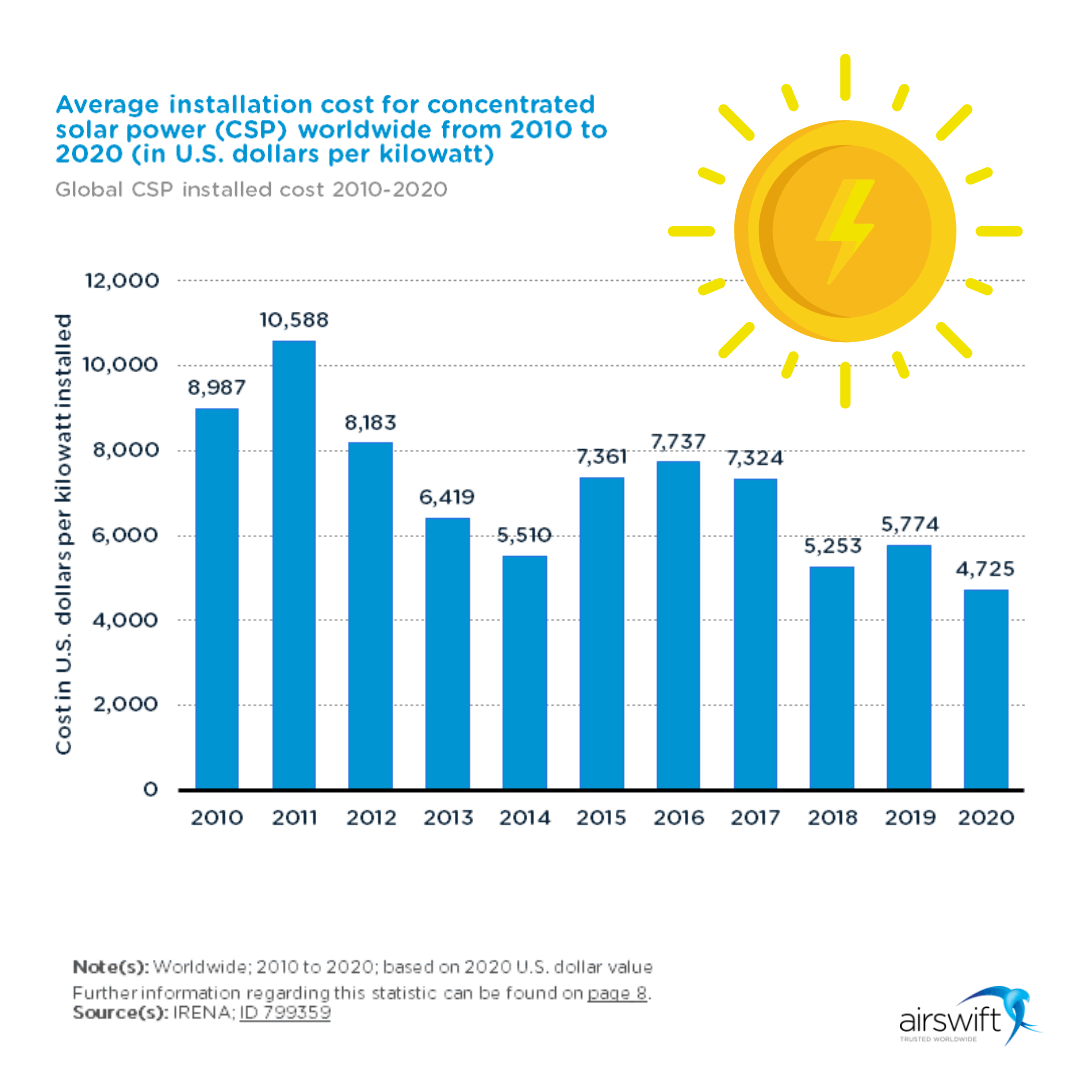
CSP Trending Companies in recent years
According to Vantage Market Research, the concentrated solar power market size is estimated at nearly USD 50 billion (2021). For the year 2050, forecasts indicate that the market could reach almost USD 60 billion.
Faced with the potential of technology and global efforts like the Paris Agreement, many venture capitalists have invested in companies responsible for shaping this solar energy niche.
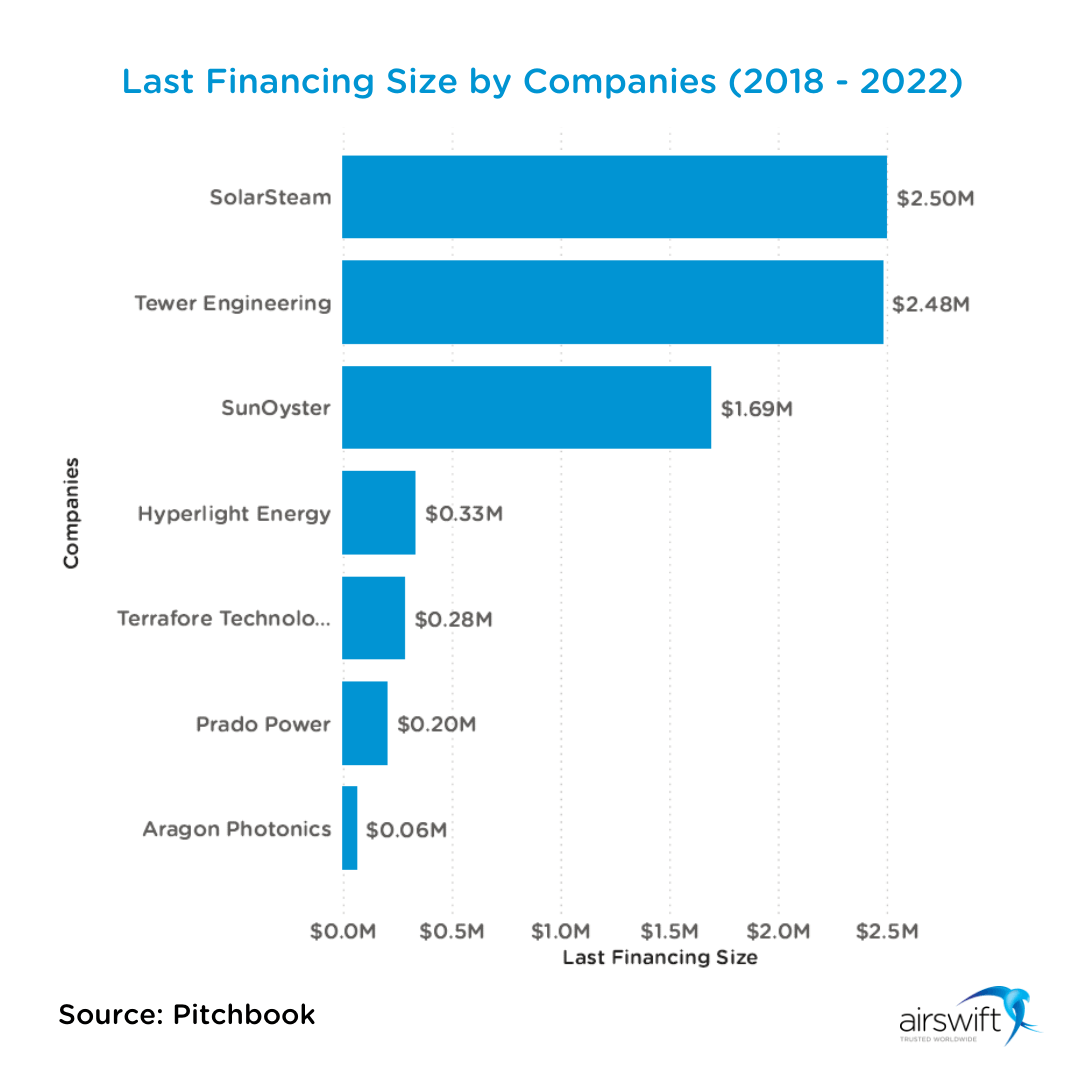
Many of these companies like SolarSteam and Tewer Engineering work with their own software and with their own heliostats configuration. The sector, as shown below, is already spread across different continents.
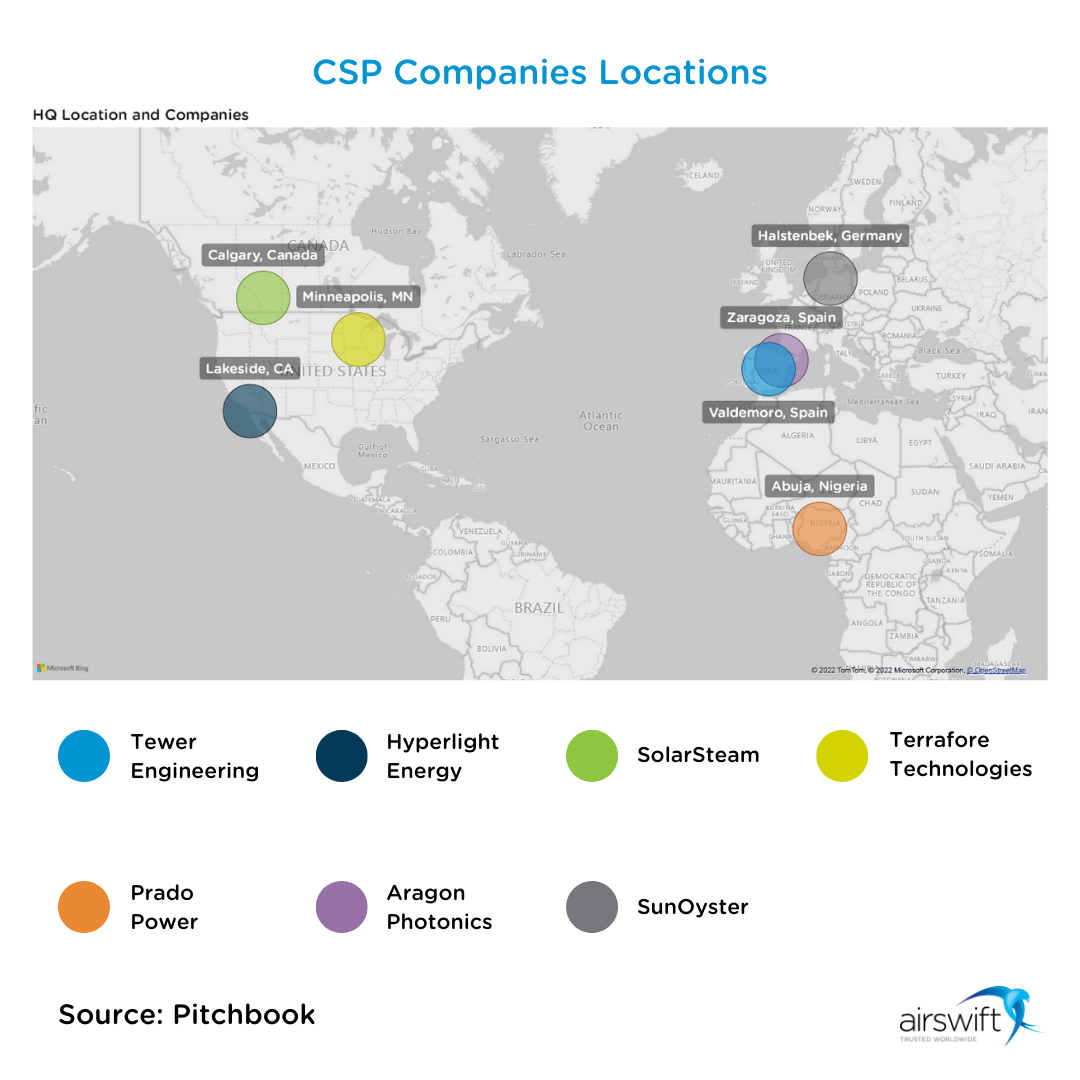
This new market has benefited from the know-how of other industries such as mobility/automotive through talent acquisition. Many engineering professionals are transitioning into the energy industry, thereby increasing expertise in the renewables sector.
Some countries are already taking the lead. Investments in developing a high-skilled workforce and the ready energy infrastructure are two factors pushing the results in solar power to its maximum.
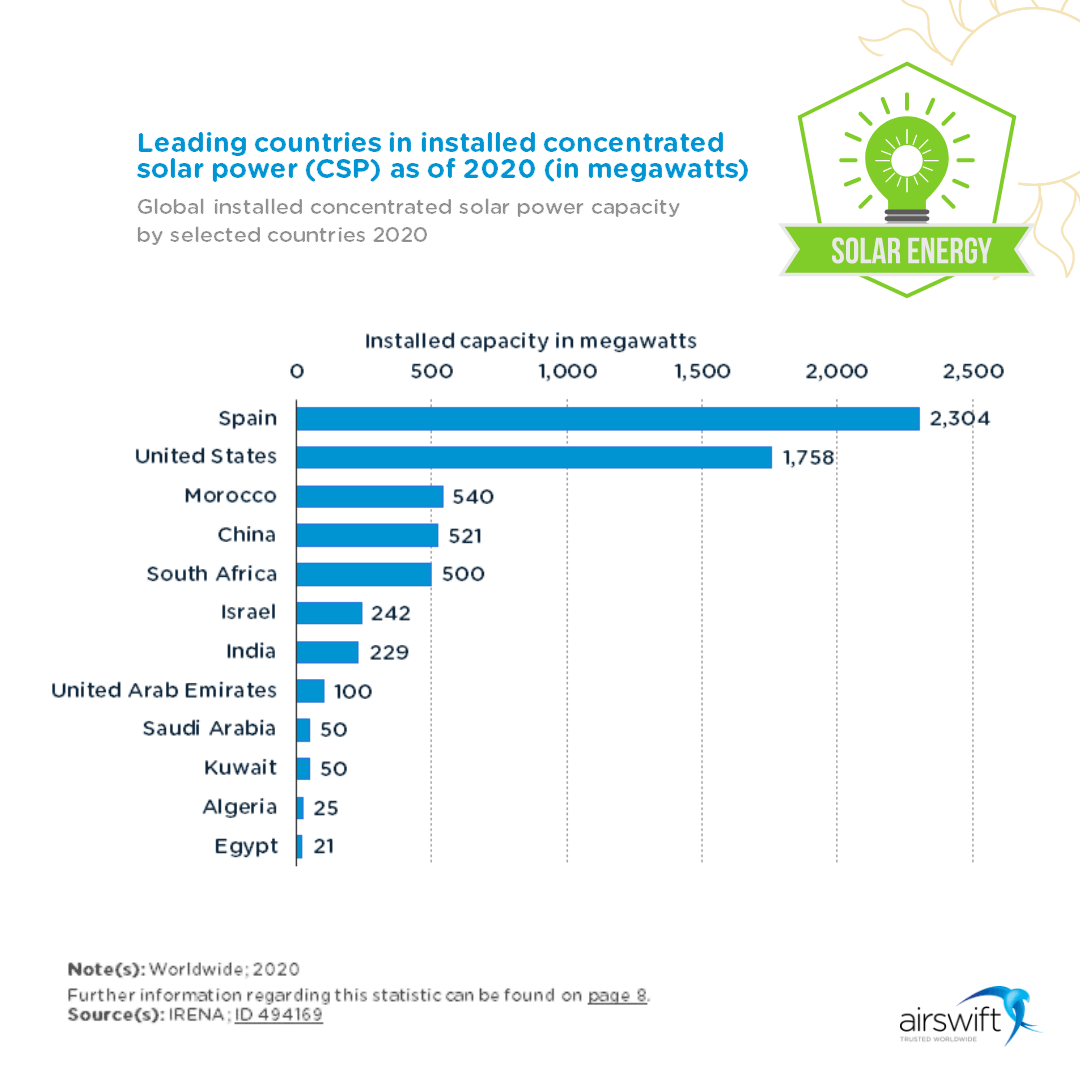
This post was written by: Raphael Santos, Content Marketing Coordinator